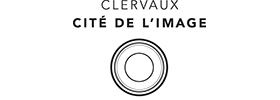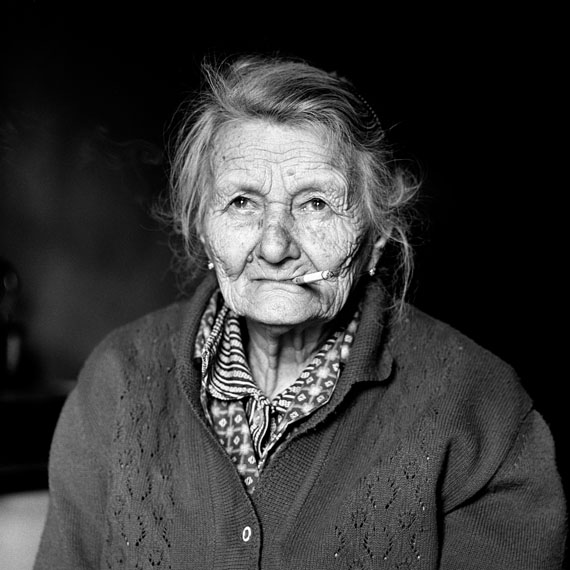
CLERVAUX CITÉ DE L'IMAGE
Meet the artists
Susan A. Barnett » Peter Bialobrzeski » Denis Dailleux » Isabelle Graeff » David Spero »
Artist Tour:
Wed 11 Sep 16:00

CLERVAUX - CITÉ DE L'IMAGE
11, Grand-Rue
9710 Clervaux
+352-27 800 283

CLERVAUX CITÉ DE L'IMAGE
"Meet the Artists"
Guided Artist Tour: 16h
Meeting point : Office du Tourisme
11 Grand-rue, L-9710 Clervaux
Round Table Panel Discussion: 19:30-21h
Auditorium Cité, Cercle Cité
3 Rue Genistre, L-1623 Luxembourg
Clervaux – cité de l’image was launched in 2009 in Clervaux, in Luxembourg. The organisation is dedicated to contemporary photography, showcasing it in the public sphere. Every year a new theme is being addressed and explored, by means of photographic installations scattered around town. The current exhibition explores the different forms the portrait can take in contemporary photography. The subject allows for certain interpretations and liberties in its definition and the selection of images. The conscious expansion of the meaning of "portrait" serves to enable additional reflections – perhaps in favour of a cultural landscape and its perception? This wider understanding of the genre does not, however, erase its distinct characteristics. The collection exposed here draws a subtle portrait of today’s society and shows various points of view: personal – cultural – fictitious – transitory.

Isabelle Graeff: "Exit"
Isabelle Graeff moved to England after a death in the family. Coming to terms with significant events in a person’s life requires time for recentering and questioning of identity. The personal circumstances intuitively put the German photographer in tune with the particular atmosphere in a country on the threshold of the Brexit decision.
Her work is not beholden to a specific genre. Isabelle Graeff’s snapshots seem to draw a portrait of the country. Just as the change of seasons introduces a mood shift, so her visual inventory catalogues an atmosphere that portends an upheaval. Perhaps it is merely subjective impressions that retrospectively make the connection between the photographs and Brexit and give the collection its name. But aren’t images always the result of subjective impressions? And isn’t the viewer’s gaze invariably tinted by interpretation?
Viewing it from the other side of political developments, a wholly new portrait emerges, showing a desolate cultural landscape, wide nature shots, austere urbanity and a variety of human faces. Stagnation and change, expectation and wonder, proximity and distance, familiarity and foreignness alternate. The glance towards strangers is fleeting. The alternation of subjects from image to image conveys a feeling of movement through space and progress through time. The photographer lines up impressions like links in a chain. Just like a jigsaw puzzle, these snippets combine to form a full picture between subjective premonition and factual documentation – the freedom of deciphering it is up to the viewer.
Peter Bialobrzeski: "Heimat"
At the geographic level, the home represents a specific place, a region defined by its familiarity. Exploring no longer presents a challenge, but instead evokes a feeling of comfort. At the social level, it is analogous to community and belonging: the bosom of the family or the circle of friends, along with traditions and customs. At the sentimental level, the subjective memory draws a clear picture of the home based on recollections and personal experience. This multi-layered nature of "Heimat" results in a complex construct that is easier to grasp emotionally than to explain intellectually.
Any attempt to explain "Heimat" on the visual plane invariably leads to the German Romantic Era and the paradigms found therein. It is interwoven with the romantic landscape, grandiose views of nature, captivating the gaze through their beauty and grandeur. The word "Heimat" thus becomes the subject of polemics between the individual appropriation of the term in the private realm, and the misuse on the public and political stage. The duality of the term is remarkable: a longing for idyll and ideal stands alongside intolerance and a fear of loss.
Peter Bialobrzeski confronts this volatile topic head on. Can the question of beauty – a purely subjective form of appreciation – even be asked in contemporary photography? Is it possible to have a factual discourse based on emotional concepts, or do emotions stand in irreconcilable contradiction to the documentary character of an image? Can "Beauty" be represented independently of nostalgic sensibility?
Susan Barnett: "Not In Your Face"
The entire series by the U.S. photographer is based on the principle of the figure seen from the back. In the Visual Arts sciences, this is a design element of symbolic significance: the figure’s back reproduced in two dimensions enables the real life viewer to take the subject’s place in the picture and see what the depicted person sees. It is traditionally a very effective way to increase the effect of stepping into the picture. The motif helps penetrate the pictorial space and draws the observer’s gaze deep into the work itself…
Susan Barnett breaks with this tradition. The human figure occupies the entire space, preventing the observer from decoding the picture. The in-depth view is blocked by an anonymous back, which seems to be addressing the viewer, clad in illustrative and flashy clothing. Where before one would try to decipher someone’s facial expression in getting to know them, nowadays this communication has moved down to the chest, or even the back. This shift, previously read as disinterest or withdrawal, has become a direct and efficient message. At the same time, helped by the anonymous street setting, it becomes an indirect appeal. This once bizarre attitude has made its way into daily discourse and become an integral part of our standard personal coding. But this communication also takes on a political dimension. The systematic study undertaken by Susan Barnett evolves towards a typology in contemporary sociology.
David Spero: "Settlements"
David Spero draws the portrait of a few communities in Britain that have chosen to partially separate and live in parallel from so-called mainstream society out of ecological considerations. Spero uses documentary-style imagery to illustrate the creative potential and pioneering spirit displayed by these groups on their quest for new, alternative
modes of existence.
His work shows homemade houses and their inhabitants, as well as the gardens that allow them to support themselves and ensure their autonomy. This rejection of the current, globalized social trends is not an act of defiance or based on an anarchist stance towards society. Rather, these new settlements want to challenge our responsibility towards nature. Perhaps we should not hand all of it over to political systems.
In his work, David Spero shows subsistence models carried by personal initiative and collective consciousness. He tells the story of a few small groups who have made it their mission to prioritize the low-impact management, optimal restoration and long-term protection of the natural resources at our disposal.
Denis Dailleux: "My aunt Juliette"
In his series Denis Dailleux sees his gaze returned in a unique and playful way by his great-aunt. The dialogue between the two protagonists is a constant exchange, making the series appear like a power play. This aunt Juliette is a strong character: she plays the queen, poses as a peasant, appears as grandmother, defies her age which shows her fragility, all the while maintaining her rebellious gaze. She confronts the photographer and claims the camera's visual field as rightfully hers.
"Imbued with his distinctive delicacy, Denis Dailleux’s photographic work appears calm on the surface, yet is incredibly demanding, run through by an undercurrent of constant self-doubt and propelled by the essential personal bond he develops with those (and that which) he frames with his camera." (Christian Caujolle)

from the series "Settlements"
© David Spero

© Denis Dailleux / Agence VU’